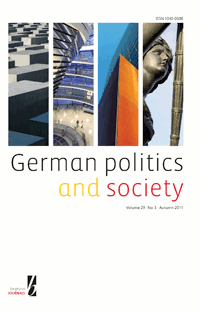Two weeks after the fall of the Berlin Wall, on 28 November 1989, West German Chancellor Helmut Kohl announced a 10-point program calling for the two Germanys to expand their cooperation with the view toward eventual reunification. On 18 May 1990, the two German states signed a treaty agreeing on monetary, economic and social union. On October 3rd, 1990, Federal Republic of Germany and the Democratic Republic of Germany were reunited to create one single federal Germany, now celebrated as German Unity Day!
Take advantage of our offer of FREE access to the journal, German Politics and Society until the end of the year! Please use code GSA18 and redeem here.
We are also currently offering free access to the article: Politics of Emotions: Journalistic Reflections on the Emotionality of the West German Peace Movement, 1979-1984 in recognition of International Day for the Elimination of Nuclear Weapons until October 10.
Berghahn is honored to present some of the relevant titles on the History of German Unification:
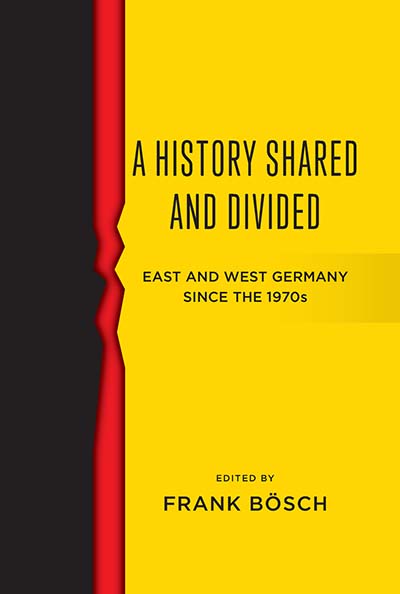 A HISTORY SHARED AND DIVIDED
A HISTORY SHARED AND DIVIDED
East and West Germany since the 1970s
Frank Bösch
Translated from the German by Jennifer Walcoff Neuheiser
Divided History uniquely explores how East and West Germany responded to the new challenges and crises of the 1970s, and reunification. Topics range from political, labor, and business issues to migration and environmental issues, showing how the two German states remained inextricably connected in the 1970s and 1980s.
Read Introduction: Divided and Connected: Perspectives on German History since the 1970s
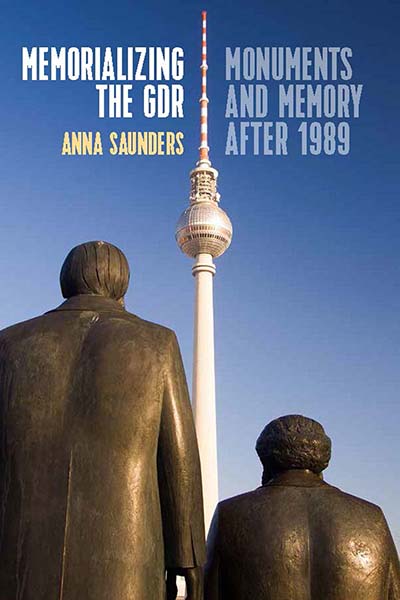 MEMORIALIZING THE GDR
MEMORIALIZING THE GDR
Monuments and Memory after 1989
Anna Saunders
Since unification, eastern Germany has witnessed a rapidly changing memorial landscape, as the fate of former socialist monuments has been hotly debated and new commemorative projects have met with fierce controversy. Memorializing the GDR provides the first in-depth study of this contested arena of public memory, investigating the individuals and groups devoted to the creation or destruction of memorials as well as their broader aesthetic, political, and historical contexts. Emphasizing the interrelationship of built environment, memory and identity, it brings to light the conflicting memories of recent German history, as well as the nuances of national and regional constructions of identity.
Read Introduction
Read blog post by author Anna Saunders: WHY MONUMENTS STILL HAVE A FUTURE
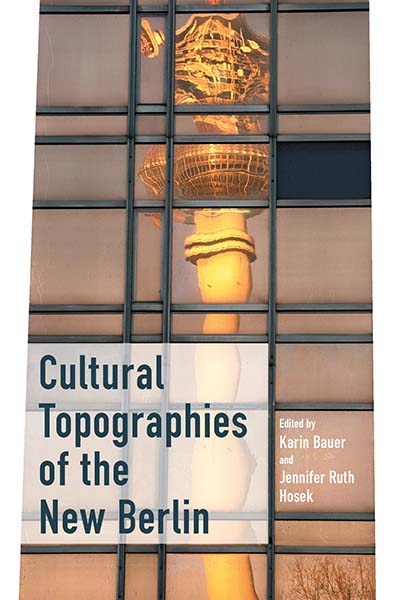 CULTURAL TOPOGRAPHIES OF THE NEW BERLIN
CULTURAL TOPOGRAPHIES OF THE NEW BERLIN
Edited by Karin Bauer and Jennifer Ruth Hosek
Since Unification and the end of the Cold War, Berlin has witnessed a series of uncommonly intense social, political, and cultural transformations. While positioning itself as a creative center populated by young and cosmopolitan global citizens, the “New Berlin” is at the same time a rich site of historical memory, defined inescapably by its past even as it articulates German and European hopes for the future. Cultural Topographies of the New Berlin presents a fascinating cross-section of life in Germany’s largest city, revealing the complex ways in which globalization, ethnicity, economics, memory, and national identity inflect how its urban spaces are inhabited and depicted.
Read Introduction
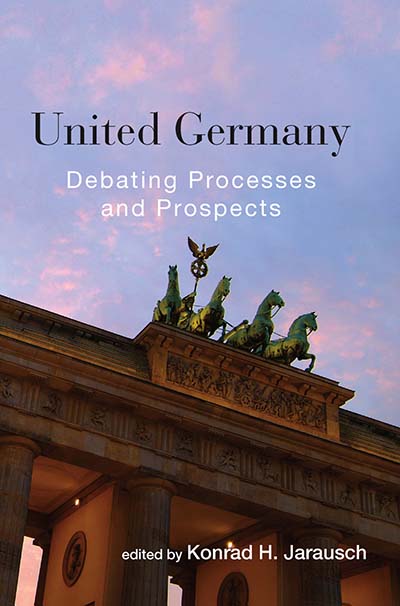 In Paperback
In Paperback
UNITED GERMANY
Debating Processes and Prospects
Edited by Konrad Jarausch
“This well-conceptualized, informative volume offers an overview of the conflicting assessments of “united Germany” that fuel ongoing debates about reunification… Jarausch introduces the collection of articles with a masterful and succinct summary of perceptions of German democracy, capitalism, society, culture, and international relations since 1990… American readers at many levels of knowledge will learn much from this book.” · German Studies Review
Read Introduction: Growing Together? A Tentative Balance Sheet of German Unification
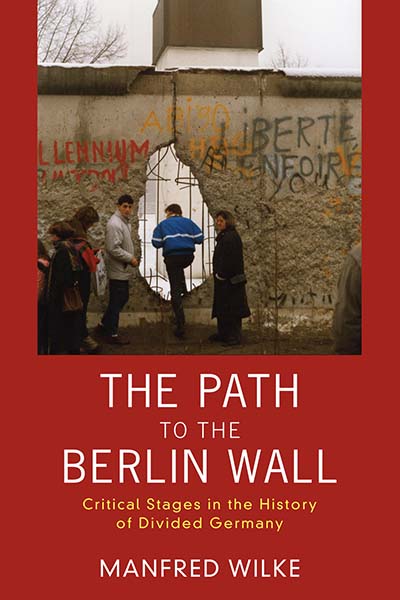 In Paperback
In Paperback
THE PATH TO THE BERLIN WALL
Critical Stages in the History of Divided Germany
Manfred Wilke
Translated from the German by Sophie Perl
“…constitutes a superlative model of combining biography with the study of nationalism. The latter constitutes the most novel contribution of this well-researched, straightforward historical depiction of Kohl’s ideology and its impact upon the continuing development of German national identity… Recommended” · Choice
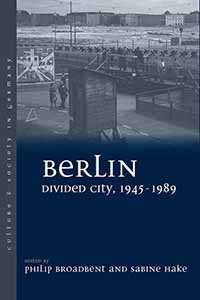 In Paperback
In Paperback
BERLIN DIVIDED CITY, 1945-1989
Edited by Philip Broadbent and Sabine Hake
Volume 6, Culture & Society in Germany
“Eschewing the primacy of political history, the authors provide a nuanced picture of a city that, in many respects, was less divided than the Cold War mindset would have us believe…This interesting volume demonstrates the many ways in which East and West Berlin were mutually influential, and how commonalities extended beyond the division.” · English Historical Review
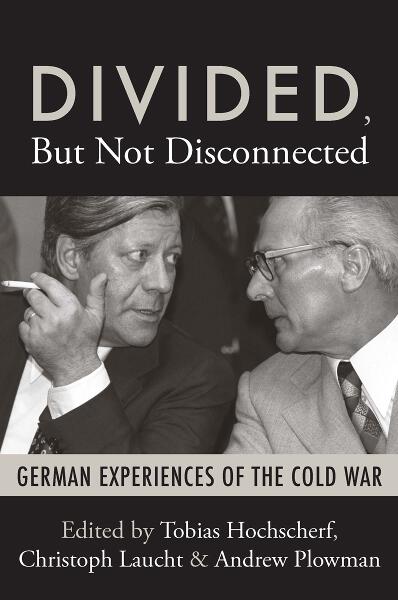 In Paperback
In Paperback
DIVIDED, BUT NOT DISCONNECTED
German Experiences of the Cold War
Edited by Tobias Hochscherf, Christoph Laucht, and Andrew Plowman
The Allied agreement after the Second World War did not only partition Germany, it divided the nation along the fault-lines of a new bipolar world order. This inner border made Germany a unique place to experience the Cold War, and the “German question” in this post-1945 variant remained inextricably entwined with the vicissitudes of the Cold War until its end. This volume explores how social and cultural practices in both German states between 1949 and 1989 were shaped by the existence of this inner border, putting them on opposing sides of the ideological divide between the Western and Eastern blocs, as well as stabilizing relations between them. This volume’s interdisciplinary approach addresses important intersections between history, politics, and culture, offering an important new appraisal of the German experiences of the Cold War.
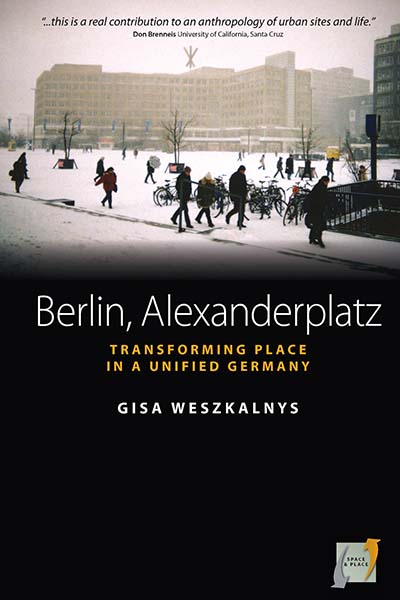 In Paperback
In Paperback
BERLIN, ALEXANDERPLATZ
Transforming Place in a Unified Germany
Gisa Weszkalnys
Volume 1, Space and Place
“Weszkalnys undertakes a fascinating exploration of the planning process, the intellectual debate and political contest over reconstruction, and the multiple roles of citizenship in the reunified city.” · H-Net Reviews
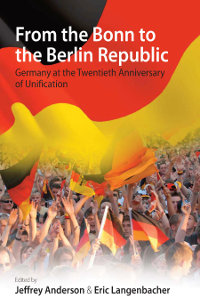 FROM THE BONN TO THE BERLIN REPUBLIC
FROM THE BONN TO THE BERLIN REPUBLIC
Germany at the Twentieth Anniversary of Unification
Edited by Jeffrey Anderson and Eric Langenbacher
“Altogether the contributions make for informative reading. The volume poses clear questions about the state of inner-German unity, and about the extent to which globalization, Europeanization, and the Cold War have changed the country.” · German Studies Review
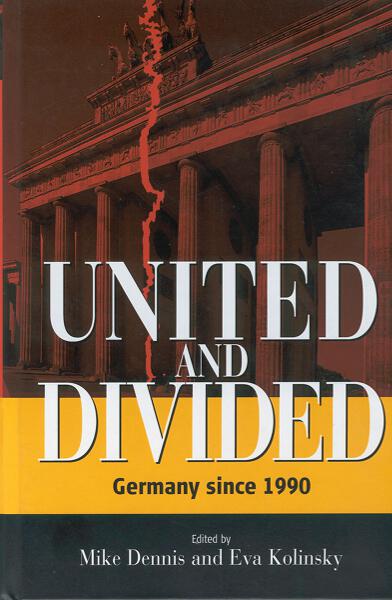 UNITED AND DIVIDED
UNITED AND DIVIDED
Germany since 1990
Edited by Mike Dennis and Eva Kolinsky
“this book illuminates successfully the flawed unification process by stringing together a variety of different aspects of society, making the divided nature of Germany today unambiguously clear.”
H-Net Reviews
For a full selection of German Studies titles please visit our webpage.
RELATED ARTICLES FROM BERGHAHN JOURNALS
FREE access to the journal, German Politics and Society until the end of the year! Please use code GSA18 and redeem here.
We are also currently offering free access to the article: Politics of Emotions: Journalistic Reflections on the Emotionality of the West German Peace Movement, 1979-1984 in recognition of International Day for the Elimination of Nuclear Weapons until October 10.
Special Issues:
From the Bonn to the Berlin Republic: The Twentieth Anniversary of German Unification, Part 1
From the Bonn to the Berlin Republic: The Twentieth Anniversary of German Unification, Part 2
Featured Articles:
From Amity to Enmity: German-Russian Relations in the Post Cold War Period
Picturing the New Berlin: Filmic Representations of the Postunification Capital
The Concept of “Normality” in German Foreign Policy since Unification
SEE ALSO:
Coming Home: Changing Concepts of Citizenship in Postwar and Reunited Germany
European Judaism, Volume 40, Number 2
La Mémoire Officielle Française et la Réunification Allemande
French Politics, Culture & Society, Volume 31, Number 1
What Stories Are Being Told? Two Case Studies of (Grand) Narratives from and of the German Democratic Republic in Current Oberstufe Textbooks
Journal of Educational Media, Memory, and Society, Volume 6, Number 1
IN US ON SOCIAL MEDIA
For updates on these and other Berghahn titles as well as all other exciting developments from Berghahn Books, ![]() become a Facebook fan, follow us
become a Facebook fan, follow us
on ![]() Tumblr or
Tumblr or ![]() Twitter.
Twitter. ![]() Sign up for our email newsletters to get customized updates on new Berghahn publications.
Sign up for our email newsletters to get customized updates on new Berghahn publications.

